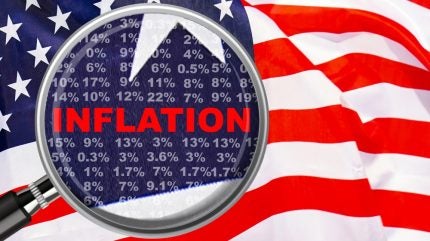
Recent analysis from the US National Retail Federation (NRF) has revealed that the inflation experienced in 2021 and 2022 was primarily driven by supply and demand dynamics rather than any deliberate action by retailers to increase prices.
The retail industry, known for its high competition and price sensitivity, saw significant shifts due to market forces and external factors, including the Ukraine-Russia conflict, leading to increased input costs.
Wholesale prices versus retail prices
Data indicates that wholesale commodity prices rose faster than retail commodity prices during the inflationary peak.
This discrepancy highlights the challenges retailers faced, with increased costs for goods, wages, energy, and storage.
The Producer Price Index for commodities showed a steeper rise compared to the Consumer Price Index, debunking the notion that retailers intentionally kept prices high for increased profits.
Gross margins analysis
A review of gross margins from the top 20 US retailers, representing a substantial portion of the retail market, shows fluctuations over time. However, current gross margins are lower compared to the pre-pandemic period from 2015-2019.

US Tariffs are shifting - will you react or anticipate?
Don’t let policy changes catch you off guard. Stay proactive with real-time data and expert analysis.
By GlobalDataThe consistency of gross margins suggests that retailers did not benefit from the higher prices they had to charge due to increased input costs.
Instead, they have been struggling to maintain profitability amidst rising expenses and changing consumer behaviours.
Profit margins and market forces
Examining earnings before interest, taxes, depreciation, and amortisation margins, which reflect gross profit minus everyday business expenses, reveals a similar trend of fluctuation.
Profit margins are currently lower than most of the pre-pandemic period and align with the average profit margin over the analysed period.
This further supports the view that retailers have not exploited higher prices for profit gains.
The competitive nature of the retail industry, coupled with informed consumers and instant price discovery, limits retailers’ ability to significantly influence prices for profit.
Pandemic effects on retail profitability
The pandemic had notable effects on retail profit margins.
Initially, there was a rapid decrease in margins due to store closures and decreased demand.
Later, an increase in margins was observed as consumers shifted from services to goods, straining supply chains and reducing inventories.
This shift led to temporary uplifts in gross and profit margins as demand surged and supply struggled to keep pace.
Retail sales growth from 2020 to 2022 was extraordinary, driven by a significant switch in consumer spending and substantial fiscal and monetary stimulus.
However, this growth was not sustainable, and margins normalised quickly, reflecting the inherent limitations within the retail ecosystem.
In the end, the analysis demonstrates that the inflationary trends of the past few years were driven by market dynamics rather than retailer manipulation.
Retailers have operated under tight margins and have faced fluctuating profitability due to rising input costs and changing consumer behaviour.
Any notion that retailers took advantage of high prices to increase profit margins is contrary to the data and overlooks the competitive nature of the retail industry.



